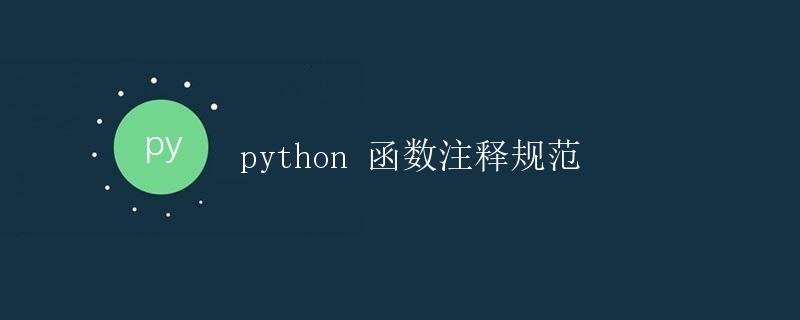Python function annotation specifications
Python Function Comment Standards

Functions are crucial elements in Python programming, encapsulating reusable blocks of code. To make it easier for others to read and understand a function’s functionality, input parameters, and return value, we often add comments within the function. This article will detail the standards and best practices for Python function comments.
Why Function Comments Are Necessary
Function comments are a good programming practice that improves code readability and maintainability. Function comments clearly explain a function’s functionality and usage, as well as its input parameters and return value. This not only helps us more quickly understand the code’s logic but also reduces subsequent errors and debugging time.
In addition, Python is a dynamically typed language. Function parameter and return value types are not declared in the function definition. Therefore, function comments can help us explicitly specify parameter and return value types, thereby improving code robustness.
Function Comment Standards
Function Comment Location
Function comments are typically placed on the next line after the function definition, enclosed in three double quotes or three single quotes. This type of comment is called the function’s documentation string (docstring).
def add(x, y):
"""
This function adds two numbers together.
Parameters:
x (int): The first number.
y (int): The second number.
Returns:
int: The sum of x and y.
"""
return x + y
Parameter Notes
For function input parameters, you should specify the meaning and type of each parameter. Typically, a colon followed by a space indicates the parameter type, followed by a description of the parameter. If a parameter has a default value, indicate it with an equal sign and the default value on the same line.
Return Value Notes
For function return values, you should specify the type and meaning of the return value. Typically, the type and meaning of the return value are written after Returns. If the function does not return a value, you can write None or leave it blank.
Example
The following is an example function that demonstrates the conventions of function comments:
def divide(x: float, y: float) -> float:
"""
This function divides one number by another.
Parameters:
x (float): The numerator.
y (float): The denominator.
Returns:
float: The result of x divided by y.
"""
return x / y
Best Practices for Function Comments
Using Type Hints
It is best to use type hints in function comments to clearly indicate the types of parameters and return values. Type hints help readers more clearly understand the function’s inputs and outputs, and they also help IDEs perform static type checking, improving code robustness.
Describe the Function’s Functionality
Function comments should clearly describe the function’s function and purpose, as well as the meaning of each parameter and return value. This makes it easier for other developers to understand the function’s purpose and how to call it correctly.
Avoid Nonsense
Function comments should be concise and clear, avoiding excessive verbosity and lengthy descriptions. Provide only the necessary information, making the comments more readable and compact.
Maintain Comment Consistency
When collaborating on a team, maintain consistency and uniformity in function comments. Try to follow the same comment conventions and formatting so that everyone can understand and adhere to the same standards.
Summary
Function comments are an important part of Python programming, improving code readability, maintainability, and reliability. By following the conventions and best practices described in this article, we can better write and understand function comments, thereby improving code quality and efficiency.